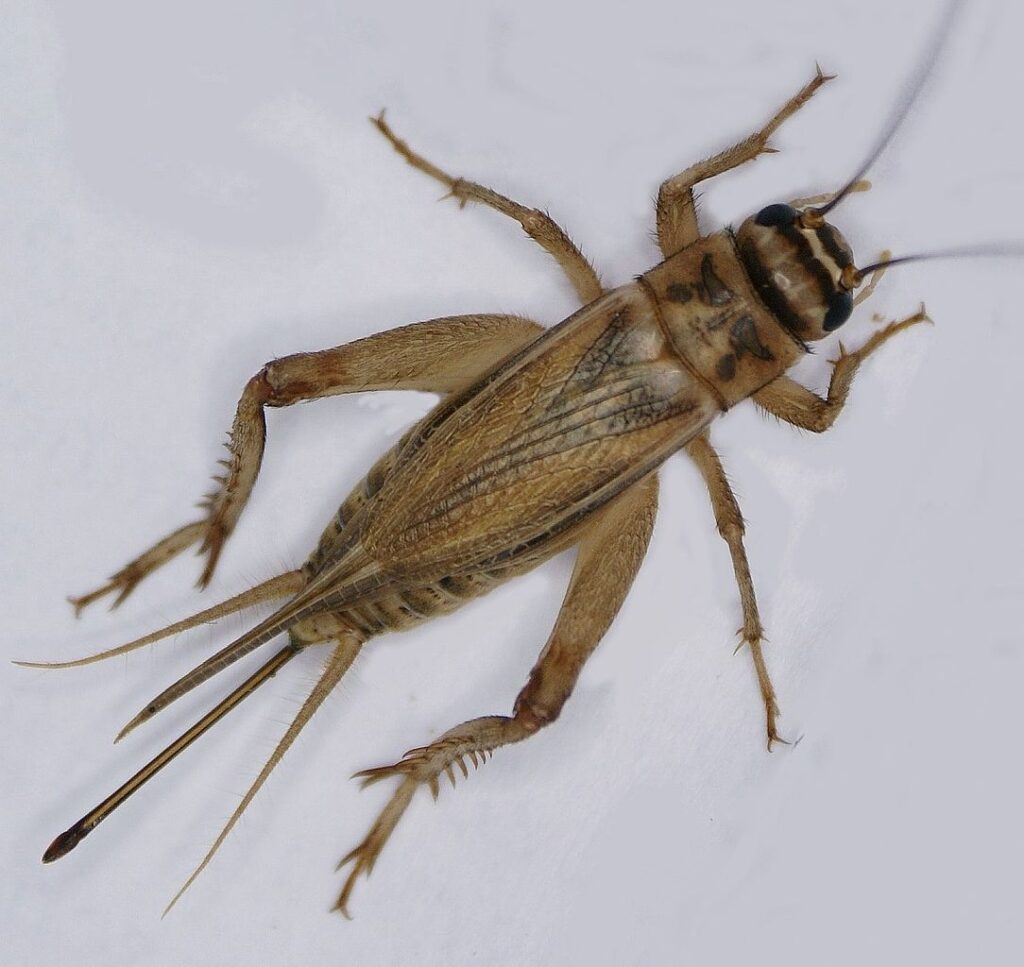House Crickets

House crickets (Acheta domestica) are common pests that can live both outdoors and indoors, causing fabric damage and nuisance chirping. Their light-colored head with three dark crossbars helps distinguish them from field crickets. Outdoors, they typically produce one generation per year, but indoors, they may breed continuously, especially in dark, hidden areas like under appliances. House crickets thrive in environments with abundant food sources and trash. Pest control for crickets is manageable with the right products and methods.
Biology
House crickets usually live outdoors but can survive indoors throughout the year. Eggs are laid in late summer and hatch the following spring, but indoors, eggs are laid year-round. Female crickets prefer laying eggs in dark, hidden spots such as under refrigerators or in cracks and crevices. Homes with standing trash or clutter often face repeated infestations. While not dangerous to humans, house crickets can damage fabrics, chewing large holes in materials.
Pest Control
Controlling house crickets requires eliminating breeding grounds like unattended trash and debris around your home. Indoor cleaning, removing clutter, and sealing cracks can reduce infestations. For severe cases, professional pest control services may use insecticides and bait traps to manage crickets. To control house crickets, bifenthrin is a common insecticide used by professionals. Additionally, minimizing outdoor lighting can prevent crickets from being attracted to your home at night.
For comprehensive pest control solutions, including house crickets, visit our Pest Control Services in Santa Clarita page. We offer tailored treatments to eliminate crickets and prevent future infestations, ensuring your home remains a comfortable, pest-free environment.
FAQs
What attracts house crickets to my home?
House crickets are drawn to food, moisture, and dark, warm environments, especially where trash or debris is left unattended.
Can house crickets damage fabrics?
Yes, house crickets can chew through fabrics, causing larger holes than those caused by moths.
How can I prevent house cricket infestations?
Keep your home clean, eliminate standing trash, and seal cracks where crickets may hide or lay eggs.
Do house crickets chirp indoors?
Yes, male house crickets chirp to attract females, and they can do this indoors throughout the year.
Are house crickets dangerous?
House crickets are not dangerous to humans but can be a nuisance and cause fabric damage.
Where do house crickets lay eggs indoors?
They lay eggs in dark areas like under appliances or in hidden cracks and crevices.
What is the lifespan of a house cricket?
House crickets typically live for a few months, depending on conditions.
Do house crickets bite?
House crickets do not bite humans, though they may nibble on fabrics and other materials.
What time of year are house crickets most active?
House crickets are most active during summer but can survive indoors year-round if conditions are favorable.
